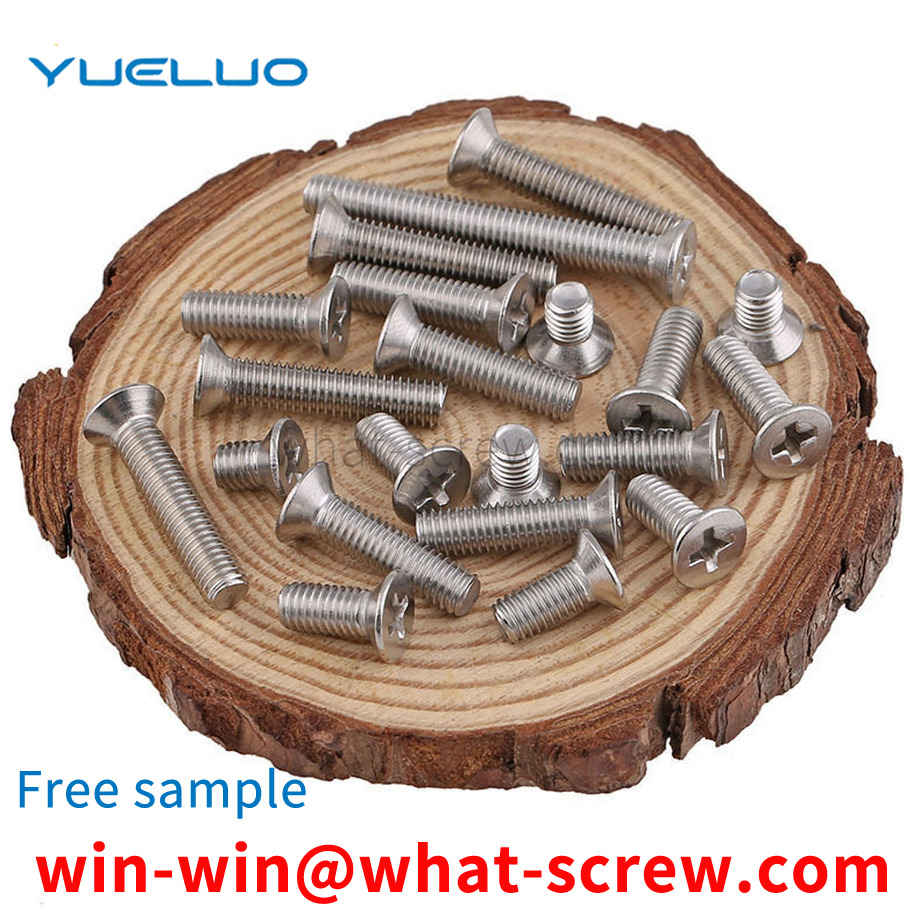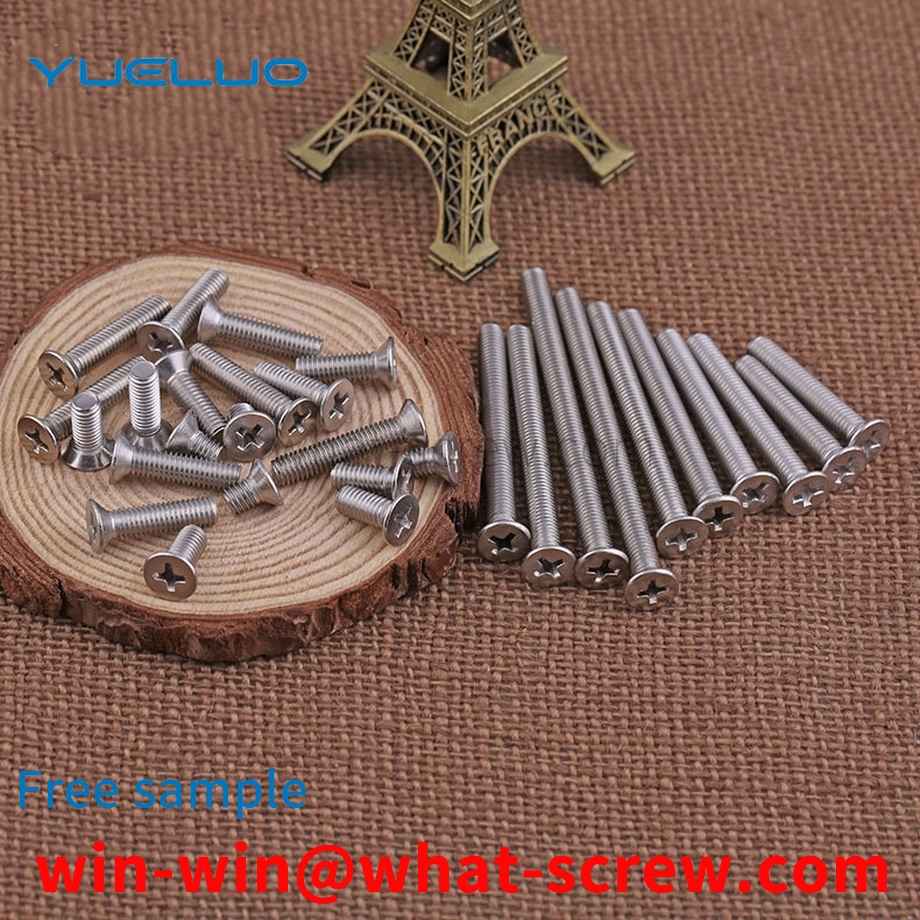Self-tapping screws were introduced into the industry in large numbers in 1914. The earliest design (essentially imitating a wood screw) was a thread-forming screw made of hardened steel with an A-ended end, mainly used to connect sheet metal channels for heating and ventilation systems. Therefore, it is also called: sheet metal screw. By the end of the 1920s, with the widening of the market and new applications, emphasizing new designs, its application performance was widely improved. The following introduces the four different stages of the development of self-tapping screws in 40 years: thread forming self-tapping screws, thread cutting self-tapping screws, thread rolling self-tapping screws and self-drilling self-tapping screws. 1. Ordinary self-tapping screws (thread forming self-tapping screws) Ordinary self-tapping screws are a direct product of early sheet metal screws. The principle is: when screwing it into a prefabricated hole, the internal thread connected to the screw is formed by the displacement of the material around the hole and the material is pushed into the space between the threads. 2. Self-cutting self-tapping screws (thread cutting self-tapping screws) Because ordinary self-tapping screws are formed only in very thin threads. And it can be easily realized on materials with good toughness. Develop and expand the use of self-tapping screws to thicker sections and harder, brittle and other materials with poor deformability. In this way, the self-cutting self-tapping screw is developed: a cutting groove or cutting edge is machined at the end of the screw shank. When this kind of screw is screwed into the prefabricated hole, the screw acts as a tap and actually cuts out the thread that connects with itself. 3. Self-Extrusion Self-Tapping Screws (Thread Rolled Self-Tapping Screws) In the early 1950s, fastener engineers began to recognize the potential advantages of self-tapping screws as structural rather than just lightly loaded attachments. This has led to the development of a new self-tapping screw thread rolling self-tapping screw (self-extrusion self-tapping screw). According to the design principle of cold forging taps, the thread and end are specially designed for this kind of screw, so that the screw can be formed by applying intermittent and periodic pressure on the crest of its thread instead of on the side of the entire thread. Internal thread for connection. By concentrating and limiting the forming pressure, the pressurized material next to the hole is made to flow more easily and to better fill (squeeze) into the flanks and roots of the thread of the self-tapping screw. Since the frictional resistance of screwing in is much lower than that of ordinary self-tapping screws, threaded rolling self-tapping screws (self-extrusion self-tapping screws) can be screwed into thicker sections. At the same time, it has better screw control and tightening torque, and greatly improves the connection strength and overall firmness. The engineering standard of this kind of self-tapping screw stipulates that the selection of materials, the mechanical properties of heat treatment and the working performance should be strictly controlled. 4. Self-drilling and self-tapping screws (self-drilling screws) People have done statistics: Among the ten expenses that constitute the total assembly cost, the highest one includes the processing of holes. In practical applications of self-tapping screws, prefabricated holes need to be processed. Moreover, in order to make the prefabricated holes have good effect in practical application, the size of these holes must be controlled within a fairly strict range. In the early 1960s, self-drilling and self-tapping screws appeared. A major step forward in reducing assembly costs by eliminating the need to machine prefabricated holes. In general, self-drilling and self-tapping screws realize drilling, tapping and tightening in one operation. These are the four main stages of self-tapping screw design and development. In addition, two newly developed products are also worthy of introduction. Both are screws with a special thread type. One is designed for plastic and other low-strength materials; the other is used in the construction industry to connect cement wall panels, so it is also called wall panel self-tapping screws.
1) Scope This standard specifies the lock nut (referred to as nut), the size of the locking device, technical requirements, acceptance rules and measurement methods. This standard applies to the design, production, inspection and user acceptance of nuts and locking devices for tapered bushings. 2) Terminology The terms used in this standard conform to the provisions of GB/T 6930. This standard specifies the marking system, index, test method and marking of the mechanical and working performance of the effective torque section steel hexagonal lock nut. This standard is applicable to coarse thread 6H class nuts made of carbon steel or alloy steel, the width across the sides conforming to the provisions of GB 3104, the nominal height is ≥ 0.8D, and the guaranteed load and effective torque need to be specified, and the thread diameter is 3 ~ 39mm. Except for the effective torque part, the thread size and tolerance are specified in GB 193, GB 196 and GB 197. The working temperature range of the nut should be in accordance with: All-metal nut without electroplating treatment: -50℃~+300℃. All-metal nuts with electroplating treatment: -50℃~+230℃; nuts embedded with non-metallic elements: -50℃~+120℃. This standard does not apply to nuts with special performance requirements (such as weldability and corrosion resistance). For stainless steel and non-ferrous metals with fine pitch lock nuts or thin nuts made of carbon steel or alloy steel, the performance indicators and test methods of effective torque specified in this standard may be adopted by mutual agreement.
The existing machine screw structure is not conducive to assembly and automated production. The machine screw is in the form of a cylinder, the outer surface of the cylinder is provided with threads, and one end of the machine screw is provided with a notch. During installation, it is convenient to rotate the machine screw by the tool acting on the notch, so that the machine screw all enters the threaded hole and does not occupy the external space. However, the thread on the outer surface of the machine screw corresponding to the slot is easily deformed or scratched due to the external force of the tool and the threaded hole, which makes it difficult to screw in or disassemble, and reduces the versatility and interchangeability. affect product quality.
The technical solution adopted by Guangdong Yueluo Hardware Industry Co., Ltd. to solve its technical problems is: a waterproof rivet, including an integrally formed waterproof cap and a rivet rod for waterproofing, and the waterproof cap includes a lower part that is fixedly connected with the rivet rod. An end face, the lower end face includes a fixing portion arranged in order from the center position of the lower end face to the outside, a buffer portion arranged circumferentially with the fixing portion as the center, and a waterproof portion arranged circumferentially with the fixing portion as the center, the fixing portion and the rivet The rods are fixedly connected, and the section of the waterproof part is a figure-eight shape.
In order to achieve the above purpose, Guangdong Yueluo Hardware Industry Co., Ltd. provides the following technical solutions: self-expanding semi-solid installation rivets, used for connecting and perforating two or more units of parts, including top core and rivet body, characterized in that : The top core lock slot opened on the concentric sheath along the longitudinal direction is snapped into and screwed and fixed in the concentric sheath, the top core extends downward into the top core rotary sleeve, the concentric sheath The sleeve is connected with the upper sealing sleeve of the lower body and is connected with the longitudinal axis, a hollow body is arranged below the rivet body, a joint is installed under the hollow body, and a supporting foot is connected to the joint, and the supporting foot and the turning The folding clips are staggered and distributed, the folding clips are concave-convex inclined surfaces, and the supporting feet are slidably connected with the folding clips.
We have many years of experience in the production and sales of screws, nuts, flat washers, etc. The main products are: GB5783 full-threaded screws, top-blast pull-out screws, nylon nuts, shock-proof open spring washers and other products, we can provide you with suitable tightening Firmware Solutions.



















 Service Hotline
Service Hotline




